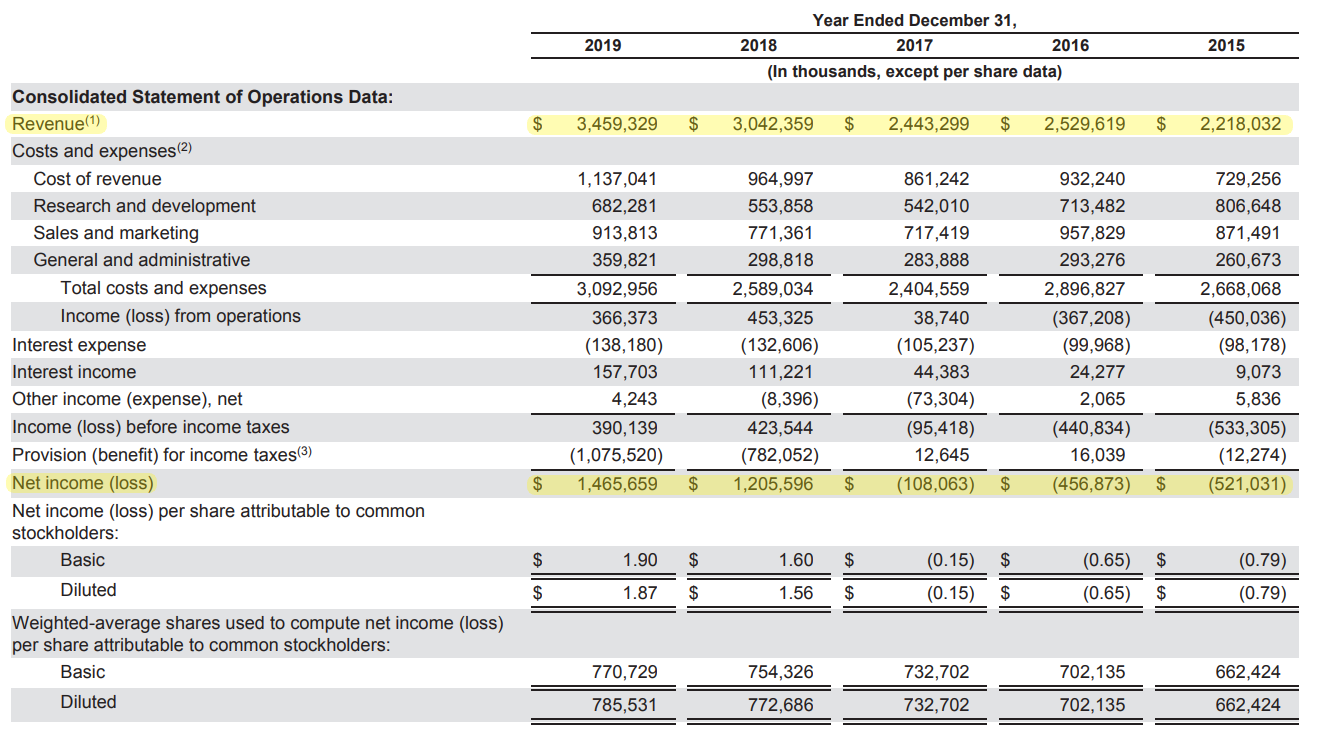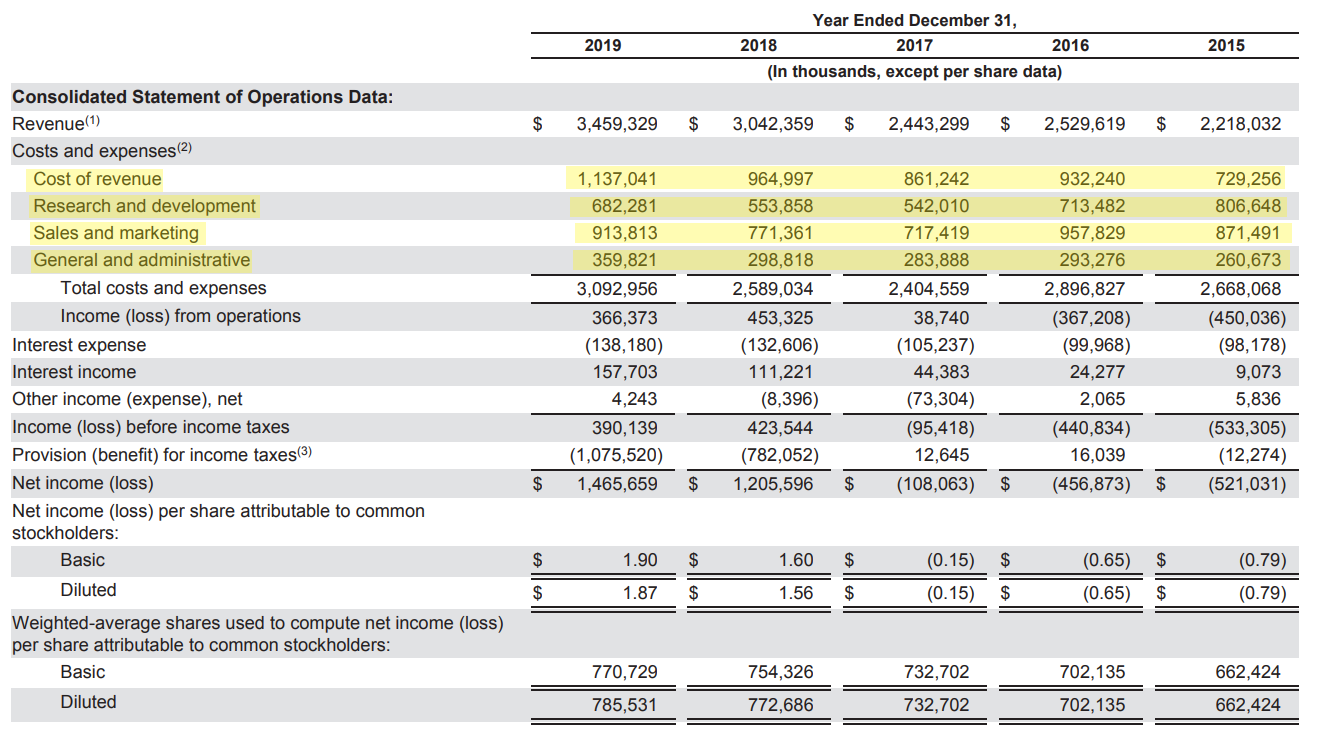Looking at App Businesses
Entrepreneurship 10
Technovation and HSBC have teamed up to bring you this is a bonus lesson! This lesson is not mandatory to complete but will bolster your entrepreneurial knowledge.
In this lesson, you will...
- Look at an example of a real life financial report and compare it to your own projections

Key Terms
- Financial Report - Report of a company’s financial results that includes profits, costs, and revenue
- Cost of Revenue -the total cost incurred to obtain a sale and the cost of the goods or services sold
A Case Study
Throughout the Entrepreneurship lessons, we have gone over many topics that will prepare you to be successful in the business world. Let’s see these concepts in action in the real world with one of the most famous app companies out there: Twitter.
Twitter’s Financial Report

Source: Twitter
Above is an excerpt of Twitter’s Financial Report. Specifically, it’s a summary of their financial data from 2015 to 2019. It’s a lot to look at! We’re going to be looking at a few specific points here, but make note of how many different metrics Twitter is tracking. Accurate data recording is a great help in making future decisions. With that said, let’s dive deeper.

The first highlighted line is Twitter’s reported Revenue. You learned what revenue was in Entrepreneurship 7. Do you remember what it is?
So we can see that Twitter made $2-3 million in revenue for each of these years. That’s pretty impressive! But let’s look at the next highlighted line: Net Income. You might know this more familiarly as Profit, which we discussed in Entrepreneurship 8. Do you remember what Profit means?
As you can see, Twitter actually had a negative profit for the years 2015-2017. Isn’t it a bit surprising to see from a very famous app company that made millions of dollars? There are reasons for how this works, but that’s a topic for another time. The point to take away here is that even big companies at Twitter can take a while to become profitable. With that said, let’s see what some of Twitter’s expenses are.

These highlighted sections are Twitter’s Operating Costs. You’ll also remember this from Entrepreneurship 8.
Let’s explain each one so that we can see how Twitter spends its money.
Cost of Revenue
These are the direct costs incurred in order to make a sale. In the case of Twitter, this includes things like the cost of maintaining servers. Notably, this does not count indirect costs like the salaries of developers.
These types of costs account for over 30% of Twitter’s operating costs.

Research and Development
This is the cost of the creation of new products and features for Twitter.
Let’s make a note that about 20-30% of Twitter’s costs is devoted to future development. It’s important to plan for the future!

Sales and Marketing
This is the cost of the division involved with things like marketing, communication, and customer service. A lot of what goes into this cost is what we went over in Entrepreneurship 6!
Let’s also note that sales and marketing accounts for around 30% of Twitter’s costs.

General and Administrative
This is the costs for things like employees involved with roles outside of those mentioned above. For example, consultants and lawyers would be costs that fall under this category.
This accounts for about 10% of Twitter’s costs.

A simplified way to summarize Twitter’s operating cost is as follows:
- 30% - Cost of Revenue
- 30% - Research and Development
- 30% - Sales and Marketing
- 10% - General and Administrative
One way to think about these percentages is that it gives us some insight into how Twitter values spending money. One may say that for Twitter, it’s equally important to 1) maintain basic operations, 2) invest into future development, and 3) market their product to a growing audience.
Activity: Going Back to Your Plan
Go back to the work you did on this worksheet from the previous Entrepreneurship lessons. Reflect back on your thought process when you calculated your own Revenue and Profit and consider the following:
- What was the reasoning behind the projected costs of running your business?
- What was the reasoning behind your projected profit?
- After seeing Twitter’s financial report, is there anything you would adjust?
You don’t need to imitate Twitter, but it’s good to see what some real life companies are doing!
Reflection
HSBC and Technovation believe in taking steps to better prepare you for your future. There’s a lot of lessons about entrepreneurship we can learn from many different sources, and real life being one of the best teachers!
You’ve also given a lot of thought into how you’ll market your app and create your business. As you finish all these Entrepreneurship lessons, remember that the most important thing is that this is one of many means to pursue your passion. You’re well equipped to venture into the world of entrepreneurship!





